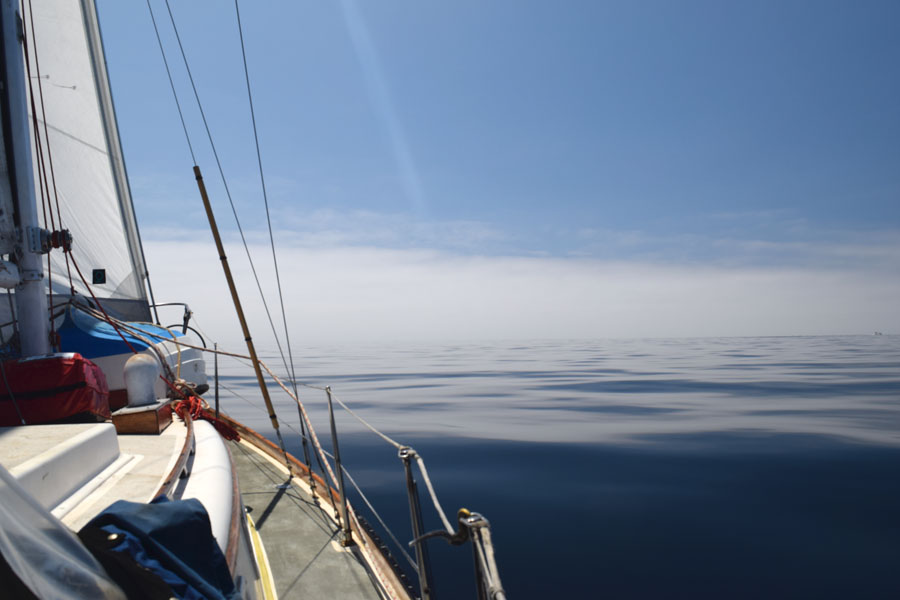Truth be told, we were not looking forward to Avalon. True, it is the main town on Catalina Island, but we also heard that it is overcrowded, expensive, and without any good anchorages; all the viable spots have been filled with mooring balls. So with that in mind, we planned to stop by to see just a few highlights and rest up before another overnight passage to San Diego, but not to stay for long.

Our first taste of the urbanized side of Catalina came as we rounded the southern corner of the island to find a massive mining operation that had carved off a face of oceanic mountainside; in stark contrast with the rest of the island where conservation is paramount. Upon entering the harbor, we were greeted by a harbormaster who met us on his skiff and told us that the only anchoring spots were in 90 feet of water or more, in an unsheltered part of the bay, but that there were mooring balls available in 15 feet of water close to the dinghy dock. Not having enough anchor rode to attempt 90 feet, that was what we chose.


Having settled in to our mooring spot though, we were pleasantly surprised. The water was crystal clear; we could see the sand below our boat, and watched garibaldi come out to swim around the dinghy docks in the evenings. Water structures such as slip-and-slides and swim platforms were provided along the beach for visitors to play on. On a small provisioning run, we were glad to find regularly priced items, even though the grocery store was small and basic.


One thing we have come to notice about Catalina is that everyone here seems happy and relaxed. Everyone here is either a tourist or works to serve said tourists, so a pleasant holiday atmosphere permeates the community. Our boating neighbors relaxed on deck and fired up their grills at dinnertime, jumping into the water for a swim when it got too hot. Another endearing thing about the island is how everything is miniaturized. Not just the animals and the grocery stores, but also the vehicles. Stubby pickup trucks and golf carts seem to be the only forms of automobile here. We watched as families doing chores whizzed about with their baby car seats in open air golf carts, sometimes left parked on the streets with the keys still in the ignition. Tourists follow suit gleefully in rental golf carts, visiting points of interest.



Right on the waterfront lies the iconic Catalina Casino. Not a gambling den, but a movie theater and ballroom; the Italian word casino means ‘gathering space’. Built by the Wrigley family in 1929 in the Art Deco and Mediterranean Revival styles, the rotunda shaped building was the first theater designed to showcase movies with sound.





Further inland is the Wrigley Memorial and Botanic Garden. Built by Ada Wrigley after the death of her husband William Wrigley Jr; the founder of the Wrigley chewing gum company, the garden is filled with a collection of endemic Catalina plant life, as well as a collection of desert flora from around the world. Looking over the entire canyon is the shrine itself, featuring tiles made in the Catalina Pottery Plant, and locally quarried stone.



We left Catalina Island with seas as flat as a mirror, yet with enough wind to fill our sails; perfect sailing conditions. Monsoon will be stopped over in San Diego for the next 2 months as we work through a list of boat projects to fine tune our sailing combinations, make our home more comfortable, and tackle some routine maintenance. Our next stop is Ensenada, Mexico!
